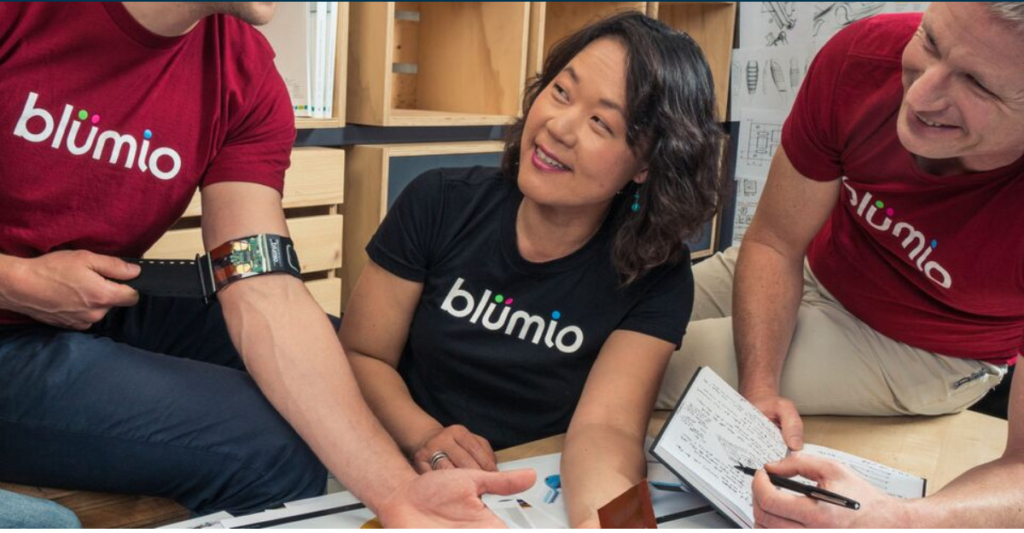Our blood pressure is always with us, but we measure it only when at doctor’s or sometimes at home. Developers of wearable medical devices strive to produce a wearable blood pressure monitor for an ongoing measurement. Fierce Electronics, a reputable information source for design engineers and engineering management, published an interview with Catherine Liao, Co-Founder and CEO of Blumio. This Silicon Valley startup is working on a wearable sensor that provides continuous measurement. The team employs a contact-less, pressure-less sensor to produce accurate blood pressure measurements.
In the interview, Catherine tells about past attempts that tried to combine electrocardiogram (ECG), photoplethysmography (PPG), and ballistocardiogram (BCG) to determine blood pressure using pulse transit time or pulse wave analysis. However, they resulted in inaccurate measurement. She refers to the research paper by Dr. Jay Pandit of the Northwestern University for summaries and challenges of those approaches.
Ms Liao disclosed details of their solution to achieve effective continuous monitoring:
“We are fundamentally designing a new type of sensor using radar. While there are FDA-approved blood pressure monitors based on the tonometer, they tend to be difficult to use as it requires precise placement and constant pressure exerted onto the measurement site that causes discomfort and bruising. In our IEEE paper we demonstrated that our sensor can produce a pressure signal that is comparable to that of a tonometer. This gives us high confidence that we can produce accurate BP measurements equivalent to tonometer-based approaches, with all the advantages expected from a cuffless wearable”.
According to Catherine Liao, the future blood pressure monitor by Blumio will employ machine learning:
“There are 2 sets of algorithms that we are developing:
- Radar → Pressure Waveform. This algorithm takes radar signal from the XENSIV radar chip and produces a high -fidelity arterial pressure waveform that can be used to assess cardiovascular metrics. We use signal processing techniques to perform this conversion.
- Pressure Waveform → Blood Pressure. This algorithm takes in the arterial pressure waveform that’s generated from the radar sensor, and translates it into discrete blood pressure values (systolic, diastolic, and mean blood pressure).
We use machine learning to help us refine the algorithm but the algorithm itself is based on signal processing techniques. Machine learning allows us to quickly sift through hundreds of characteristics within the radar signal and pinpoint those that are most relevant to blood pressure. Without it this could potentially take years to accomplish.
Read the full interview here





